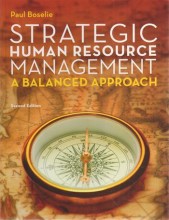Summary: Marketing
- This + 400k other summaries
- A unique study and practice tool
- Never study anything twice again
- Get the grades you hope for
- 100% sure, 100% understanding
Read the summary and the most important questions on Marketing
-
HC1: Introduction (+guest lecture)
This is a preview. There are 1 more flashcards available for chapter 17/04/2019
Show more cards here -
What are 3 myths of marketing?
- Marketing is selling
- Marketing is communication: it is a means not an end
- Marketeers create needs: it is about meeting needs
-
What is the aim of marketing?
The aim of marketing is to know and understand the customer so well the product or service fits him and sells itself -
Why is marketing about exchange?
It is about the set up satisfying exchange relations between customers and organizations (buyer and supplier). The exchange can include monetary and non-monetary -
Kotler and Keller talk about marketing activities. They name the 4 p's. What are the 4 p's and what is the 5th that is added in the book?
- Product (object of exchange)
- Price
- Promotion (communication)
- Place (distribution, could be irrelevant nowadays (netflix, spotify)
- People
-
HC2: Market Analysis
This is a preview. There are 11 more flashcards available for chapter 18/04/2019
Show more cards here -
Why should you do a Market Structure & Competitor Analysis?
- It allows you to identify other companies that you compete with that offer the same consumer benefit
- Crucial to understanding / developing a value proposition and marketing mix
- Allows firms to be proactive and anticipate
-
Which 4 questions can help you define the market?
- Who is your direct or indirect competitor?
- Who threatens your market share?
- Who is trying to offer a similar value offer, or satisfying the same customer needs with similar benefits?
- Who is competing for the same budget,
-
Four-level model of competition implies different marketing tasks for each competitive level. What is the best strategy for each level?
- Product form competition: aim marketing activities at direct competitors (the best quality)
- Product class/category competition: convince customers that your product form is best in the category (the best coffee)
- Generic competition: convince consumers of the superiority of your product category’s ability to satisfy needs (hunger, thirst, need for vitamins) over other categories
Budget competition: same challenge as with generic competition.
- Product form competition: aim marketing activities at direct competitors (the best quality)
-
Besides the four level model of competition, what is a demand based way to identify competition?
Substitution in use (focus groups) -
What is the difference between market analysis and competitor analyses?
We use the market analyses to identify the competition and competitor analyses to learn more about the competition. -
We can use role to take a closer look at the competitors. What are the 5 roles that can be distinguished?
- market leader= largest market share
- market challenger= try to attract the leaders
- market followers= smaller share
- fast movers = small who might grow fast and distrust the market
- niche= select audience
- Higher grades + faster learning
- Never study anything twice
- 100% sure, 100% understanding






























